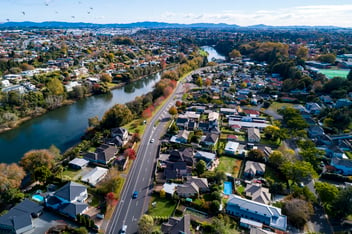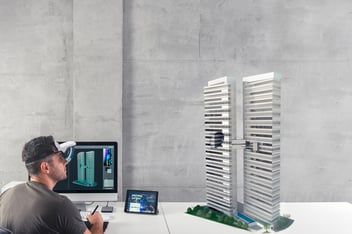
As we have already established in our exploration of social value in construction, the expectations of the industry go beyond the delivery of projects to include the provision of job opportunities, environmental enhancement, area regeneration, or improved accessibility. And, as demonstrated in our previous blog, the construction industry has the technological capacity to support this.
Moving forward, it makes sense to now consider the principle of Whole Life Value (WLV) in the delivery of built and infrastructure assets, and the drivers behind this shift.

What is Whole Life Value?
Das Moontanah proposes that “WLV can be seen to encompass the economic, social and environmental aspects associated with the planning, design, construction, operation, decommissioning and, where appropriate, the re-use of the asset or its constituent materials at the end of its useful life.”[1]
In contrast to Whole Life Costing (WLC), which only considers the costs associated with the asset, including its construction, operation, and disposal, WLV is the assessment of a project based on its long-term value and social impacts.[2]
Essentially, the mission of a value-oriented built environment industry is “to add value for customers and society by shaping and delivering the built environment to meet their needs.”[3]
.
Value over Cost
Traditionally, cost has always taken precedent. Minimizing costs allowed developers to maximize profit, provided they produced an acceptable quality of product. As such, little regard was paid to the effect of the asset on its occupants’ performance and well-being, or the lifetime operating costs.[4]
Substituting ‘cost’ for ‘value’ is, to borrow from Helena Pantelidou, “a powerful proposition, offering new dimensions to the construction industry that were previously overlooked.” [5] Essentially, WLV-thinking changes the way we deliver projects.
A WLV approach to the built environment considers the costs and benefits associated with each phase of both the project and asset lifecycle, including the long-term benefit of the asset itself, offering a level of ‘future-proofing’ that WLC on its own does not.
For example, in the delivery of capital projects, governments and clients must balance cost with the overall future outcomes they want to achieve, whether that be over the following 20 years, 50 years or more, in terms of economic transformation, carbon reduction and wider social benefits.[6]

Whole Life Value & Sustainability
Sustainability is closely linked with WLV and a key driver behind the shift from WLC. With corporate social responsibility considerations, lifecycle assessments, and environmental standards based on the need to reduce energy consumption and emissions, the construction industry is increasingly recognizing the benefit of a WLV.
As demands from stakeholders to reduce construction’s environmental impact and accelerate its social benefits increase – alongside population growth, urbanization and housing needs – WLV offers the industry the opportunity to reduce energy consumption associated both with construction and operation.
Adopting a whole life approach from the onset means that energy costs, facilities management costs, quality, durability, resilience, and whether or not an asset is fit for purpose are all considered at each project stage. Not only are the processes more sustainable but the long-term value for society and the environment provided by the asset itself is greater.
Digital Twins
Building on this move to look beyond the design and construction stage and to improve WLV, there has been a push to implement processes and technologies that support the operate and integration stages – specifically, digital twins.
As we discussed in our last blog, smart technologies represent a profound transition in how we build and how our built environment and infrastructure operate. A digital twin enables us to learn from data to support better decision-making throughout the whole-life of an asset.
In operation, this bi-directional flow of data, which includes behavioral information, allows us to monitor built assets in real-time to make them responsive and to support better social and environmental outcomes over their lifetime.
As per the Gemini Principles, a digital twin must be used to deliver genuine public good in perpetuity. Therefore, it should start with the end-users’ needs and should help to deliver inclusive social, economic, and environmental outcomes.[7]

Final Thoughts
Ultimately, for the industry to support the delivery of sustainable social value as well as built assets, it must embrace whole-life thinking. A WLV approach allows the industry to meet stakeholder requirements in terms of costs while also addressing other key value drivers, like the wider social and environmental impact.
Previous 'Asite on Social Value' Blogs:
Changing the face of construction: What is Social Value?
Meeting Expectations: Corporate Social Responsibility
Creating Social Value with Smart Construction
Sources: [1] Das Moontah [2] Designing Buildings [3] Constructing Excellence [4] Constructing Excellence [5] Arup [6] Construction News [7] Centre for Digital Built Britain
Asite Insights in your inbox.
Sign up for product news and our latest insights published monthly. It's a newsletter so hot, even global warming can't keep up.


